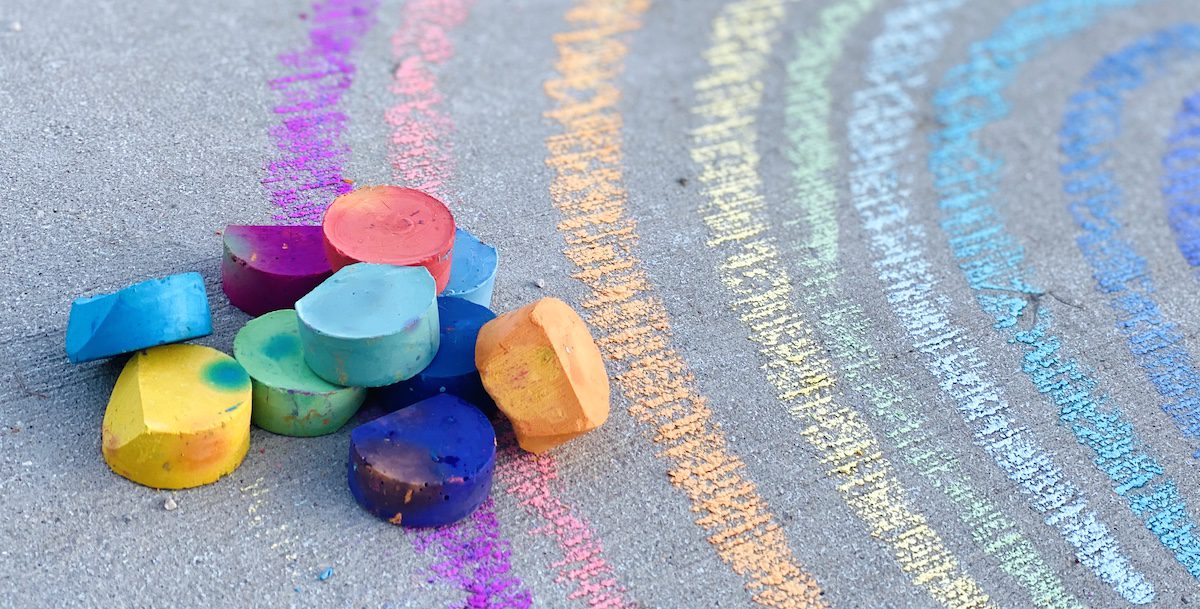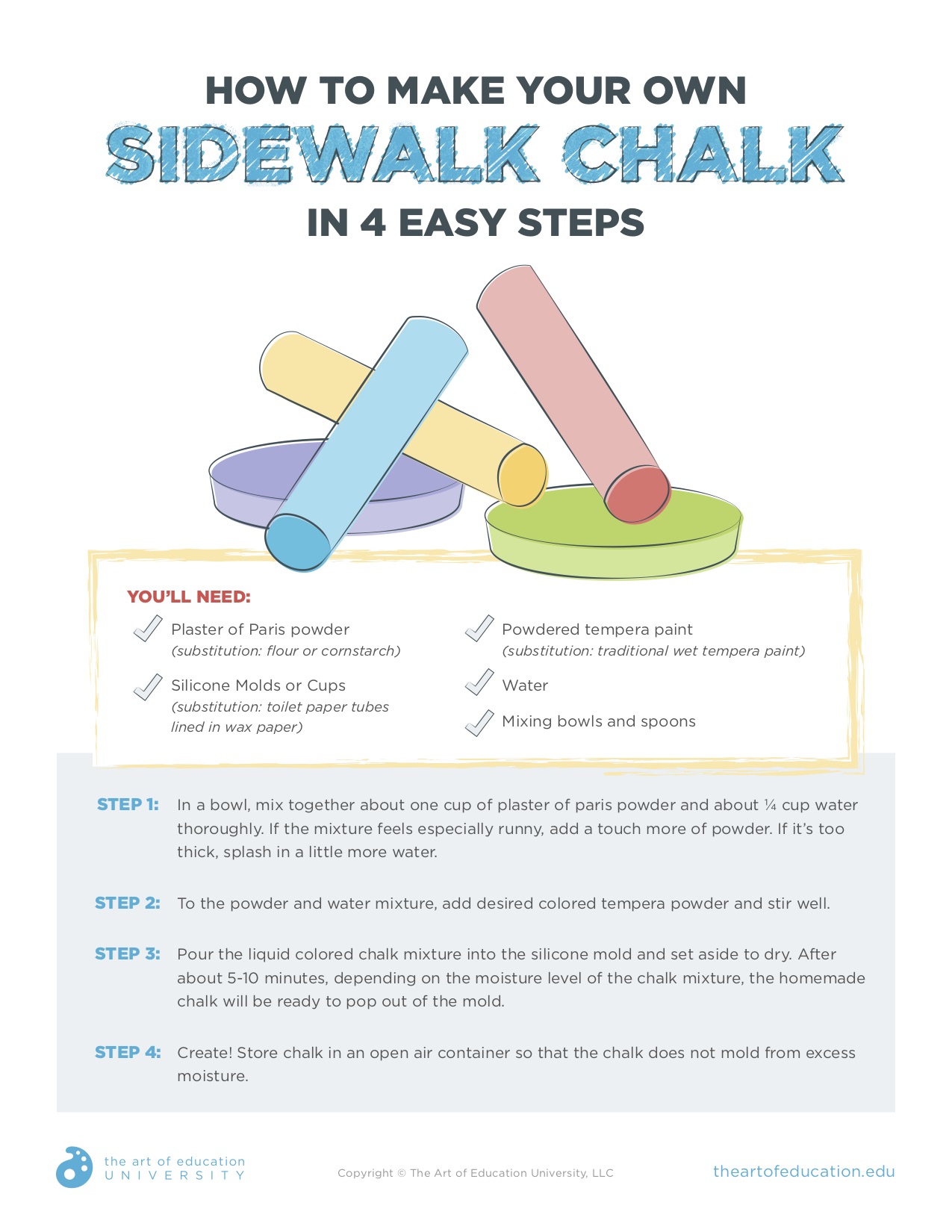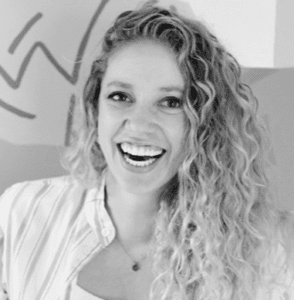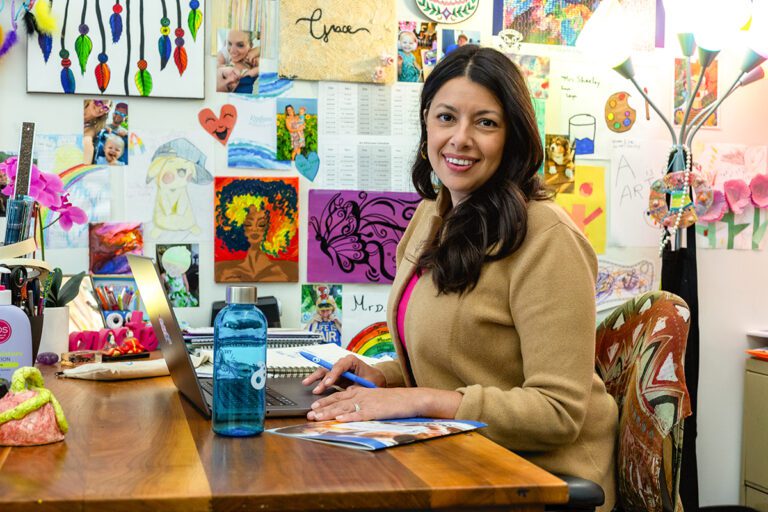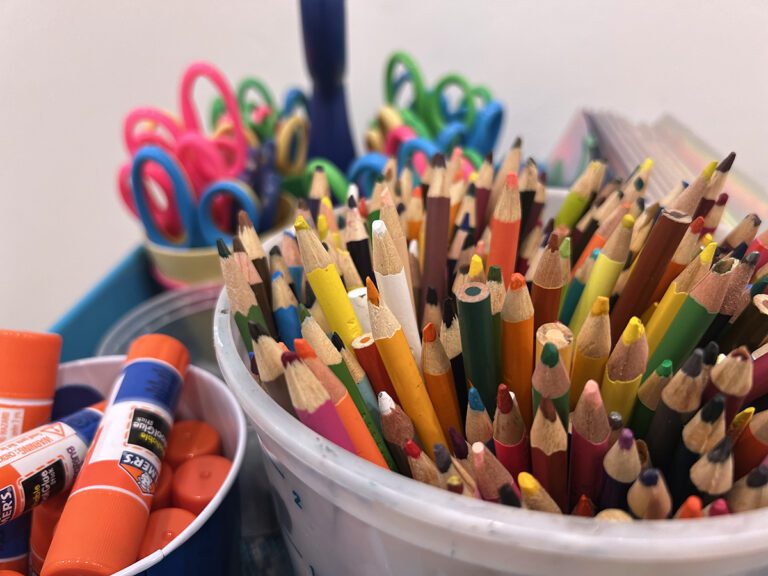Getting outside is beneficial to your health. It’s a fact. Fresh air boosts your immune system, helps to increase creativity, provides an energy boost, and aids with seasonal affective disorder.
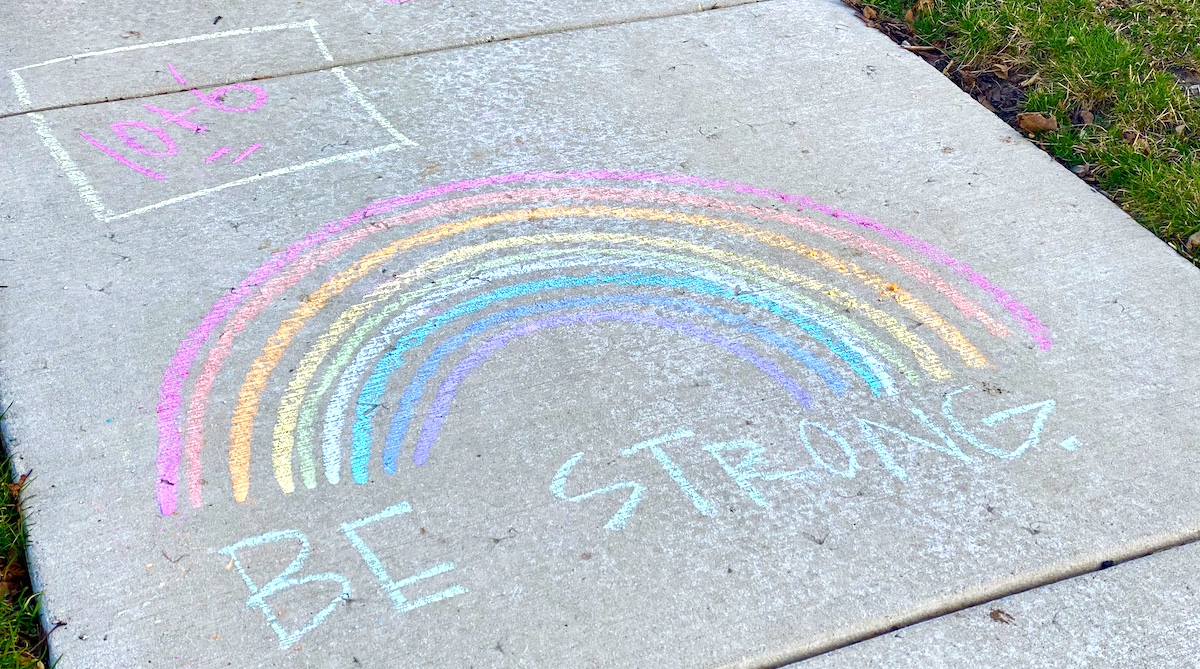
So why not combine two great things and make art while getting outside?
There are so many amazing outdoor art activities you and your students can try. But, let’s talk specifically about sidewalk chalk. Master chalk artist, Kurt Wenner, specializes in creating massive, jaw-dropping 3-D pavement masterpieces. While you may not create elaborate pieces like Kurt Wenner, you can still make your mark by creating an interactive piece of chalk art.
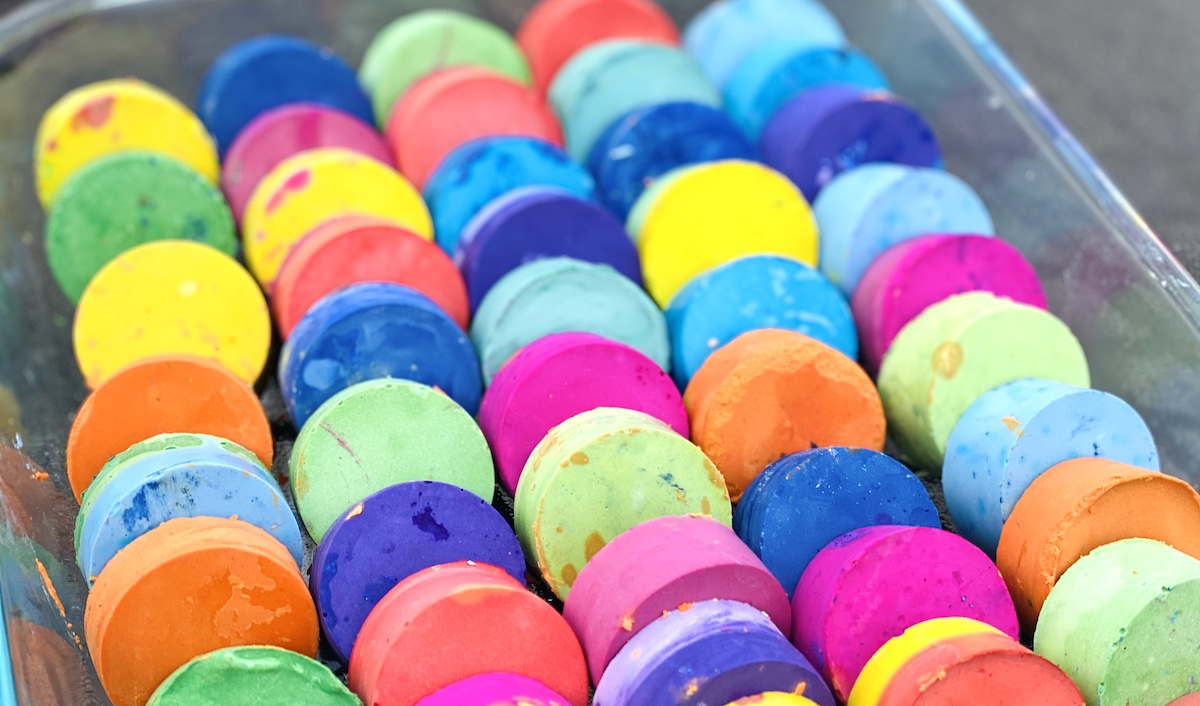
To begin, you’ll obviously need sidewalk chalk. Of course, you can purchase sidewalk chalk online or from your local art supply store but, you can also make your own sidewalk chalk—an adventure in itself! Check out this tutorial video to see complete steps to make your own sidewalk chalk.
To make sidewalk chalk, you’ll need:
- Plaster of Paris powder (Substitution Option: Flour or Cornstarch)
- Powdered tempera paint (Substitution Option: Traditional Wet Tempera Paint)
- Silicone molds or cups (Substitution Option: Toilet Paper tubes lined in wax paper)
- Water
- Mixing bowls and spoons
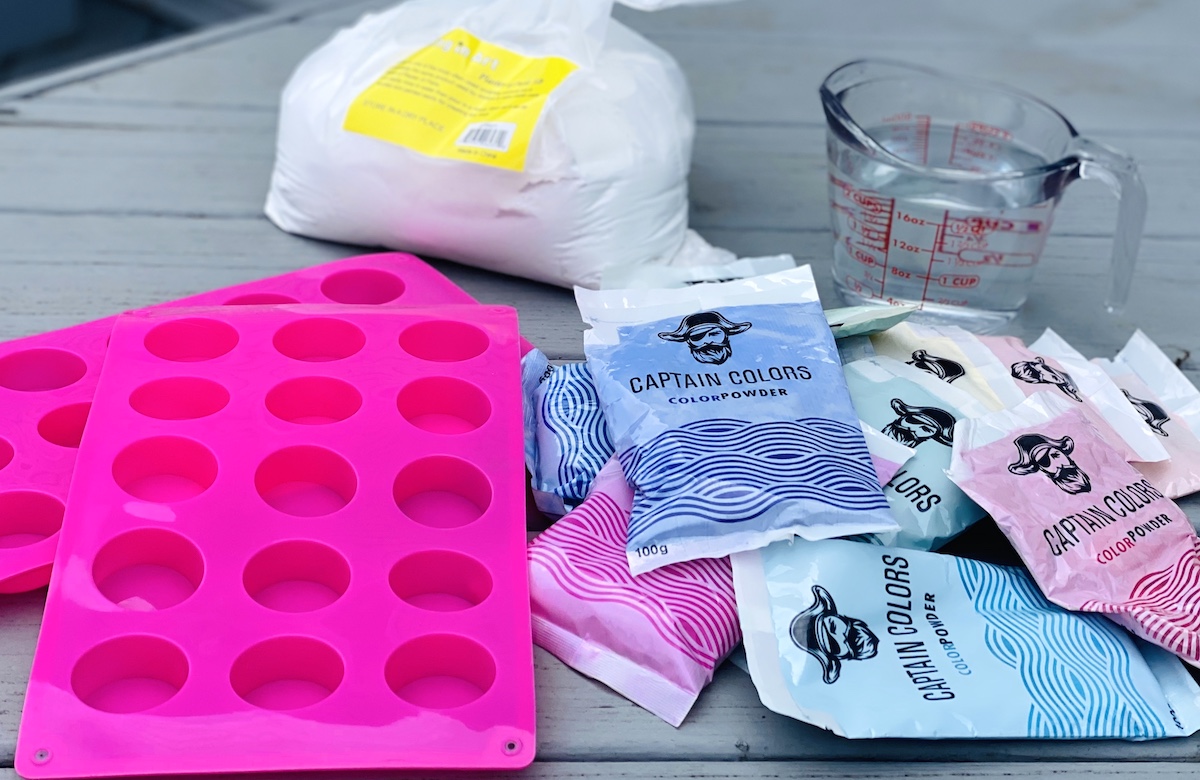
The best part about making sidewalk chalk is that it’s not really an exact science. It’s nothing like baking, where the difference of a teaspoon can ruin an entire recipe. Making sidewalk chalk is more about the proper consistency and feel than exact measurements.
To create your own sidewalk chalk using the ingredients listed above, follow these steps:
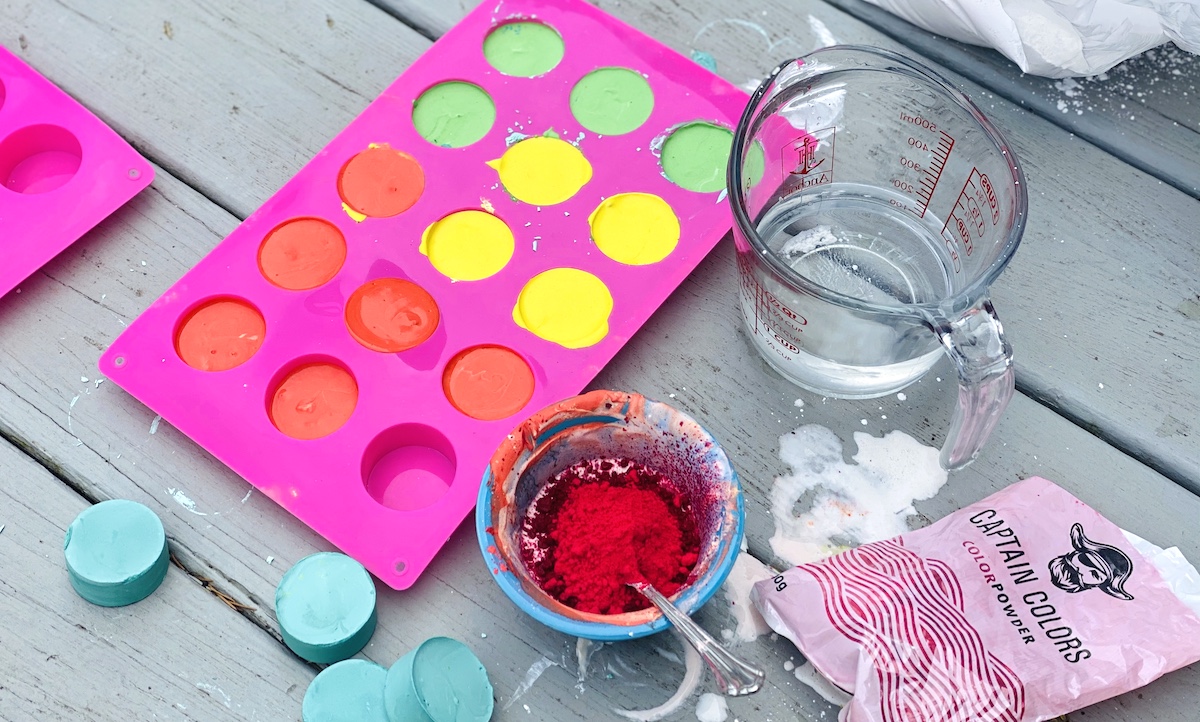
Step One:
In a bowl, mix about a cup of Plaster of Paris powder and ¼ cup water thoroughly. If the mixture feels especially runny, add a touch more Plaster of Paris powder. If it’s too thick, splash in a little more water. Remember, if you do not have Plaster of Paris powder, you can also experiment with flour or cornstarch as the base, but you may need to adjust the dry vs. wet ingredient ratio. As always, messes are encouraged.
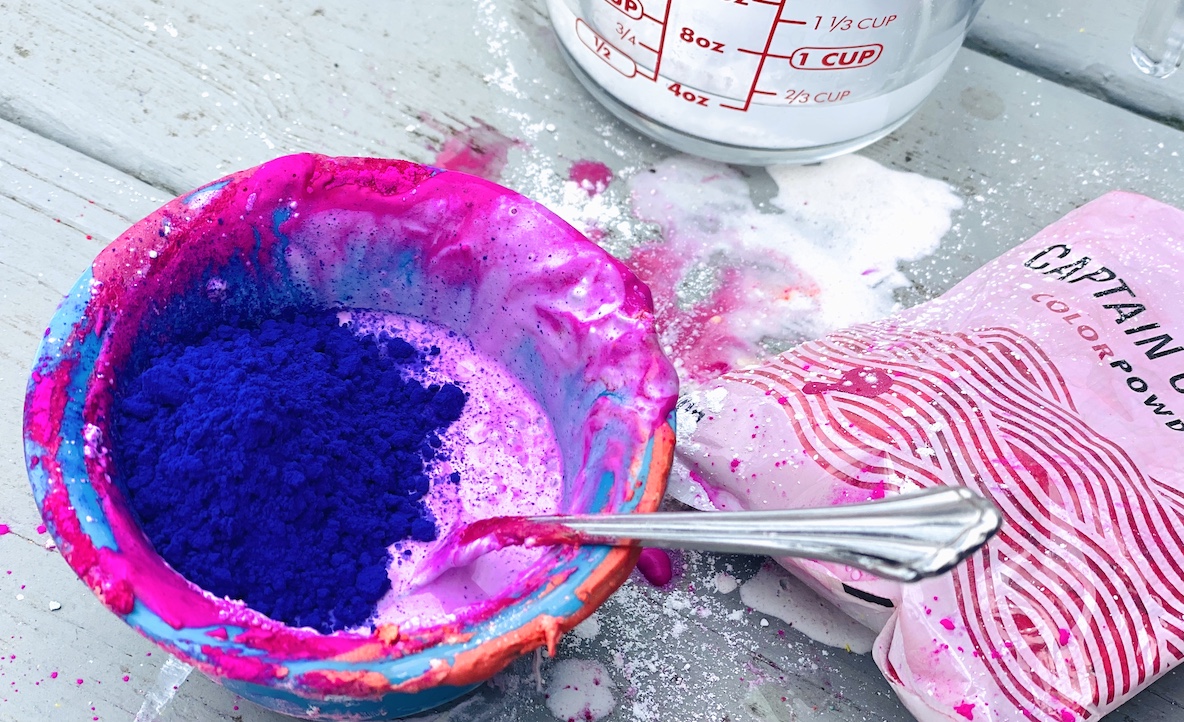
Step Two:
To the Plaster of Paris mixture, add desired colored tempera powder and stir well. This step is a great time to practice some color mixing by adding combinations of different colored powders to the mixture. Can you make lime green or fuchsia-colored chalk? Remember, If you don’t have colored powder tempera, you can use regular tempera paint, but it may change the consistency of the chalk slightly. You can even grab a paintbrush and paint right onto the sidewalk with the wet chalk mixture if you’d rather create with sidewalk paint instead of waiting for the chalk blocks to dry.
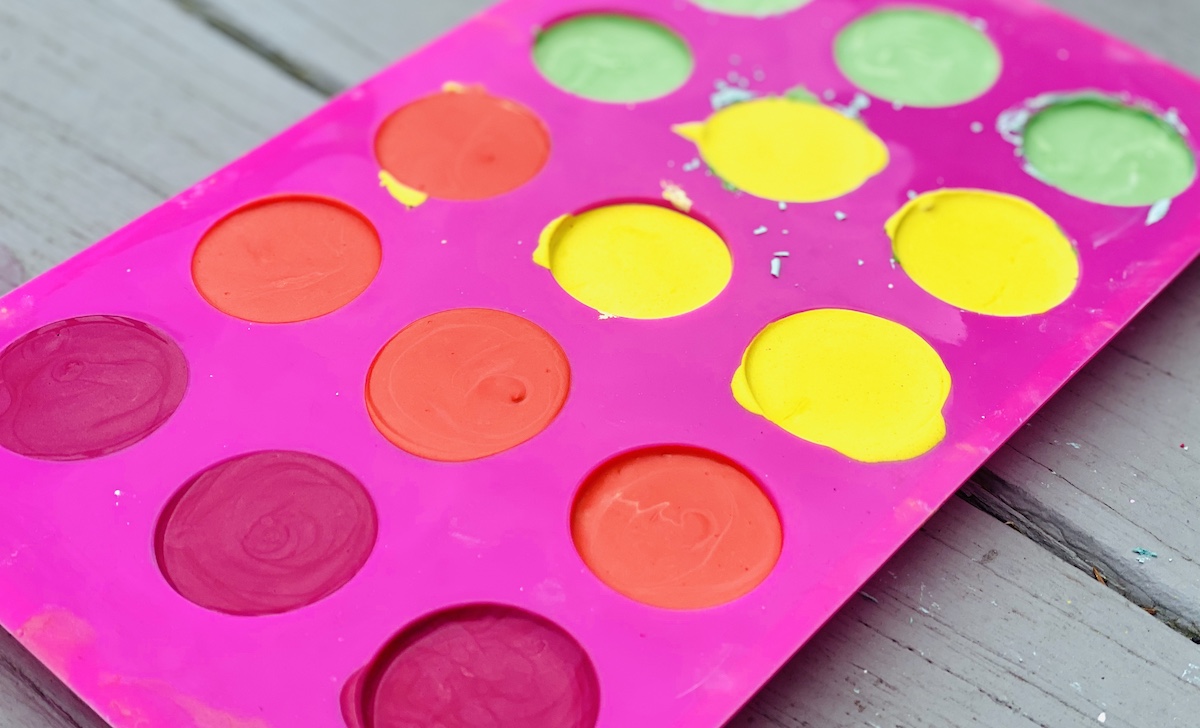
Step Three:
Pour the liquid colored chalk mixture into your silicone mold and set aside to dry. After about five to ten minutes, depending on the moisture level of your chalk mixture, your homemade chalk will be ready to pop out of the mold. Before pressing them out of the mold, do the shake test and wiggle your silicone mold to ensure that the chalk seems solid.

Step Four:
After you have taken the chalk out of the molds, you are ready to create! Store in a bucket, open to the air, so the chalk does not mold from excess moisture.
Download this helpful PDF to reference as you create your very own chalk!
Now, you’re ready to create!
A really fun way to create an interactive experience with all your awesome sidewalk chalk is to make an obstacle course. It is equally fun to watch passers-by complete the obstacle course right outside your window. It will surely bring a smile to your face!
Try a few of these obstacle course ideas when designing your interactive sidewalk art:

”Left Foot Only” or create other outlined footprints to get folks to practice their balance.
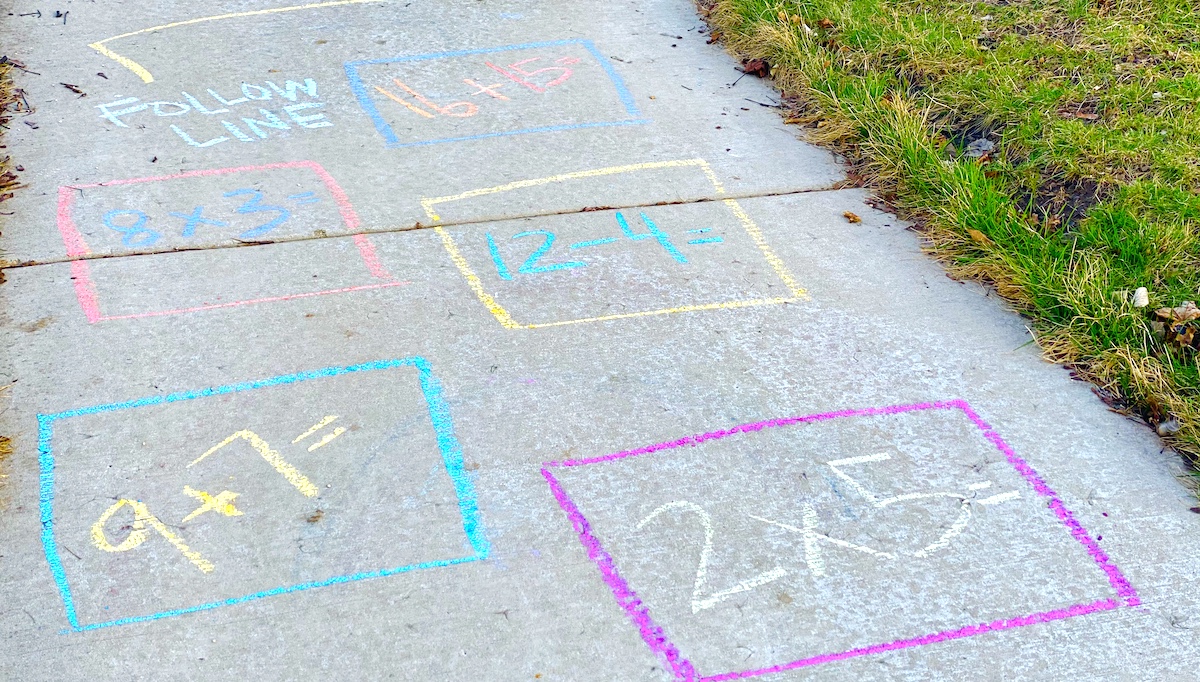
”Math Boxes” are an awesome way to hone those math skills while jumping from square to square.
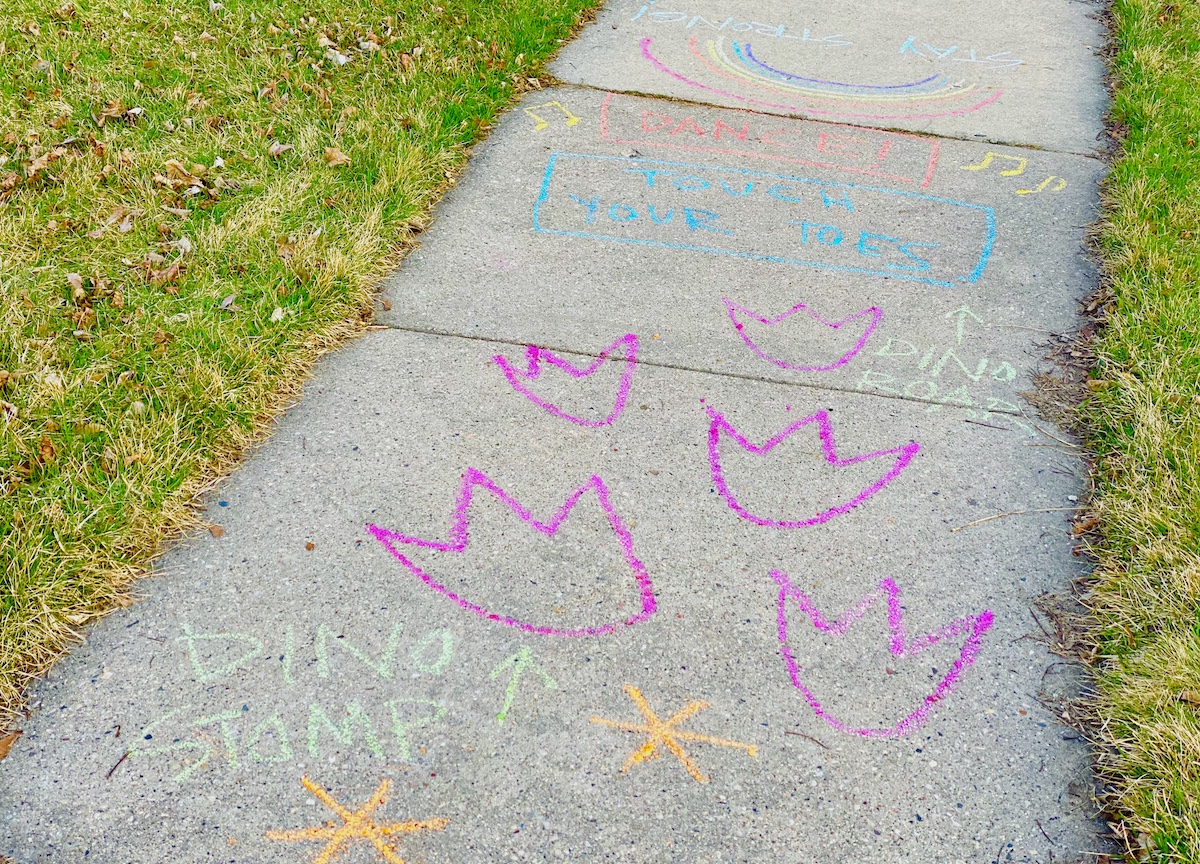
”Dinosaur Stomp” is just plain fun, and let’s face it, we always have room for silliness.
Creating art is a sure way to boost your mood. It’s especially important to harness the power of art during uncertain times.
Whether you try making your own sidewalk chalk obstacle course or simply get outside and sit in the grass, breathing fresh air is essential. Do your best to take ownership of your attitude and be the best you can be. So, get outside, breathe some fresh air, and create some art to keep spreading positivity.
Have you ever made sidewalk chalk from scratch?
How else could you use the silicone molds in your classroom?
How could you incorporate this into a color mixing lesson for your students?
Magazine articles and podcasts are opinions of professional education contributors and do not necessarily represent the position of the Art of Education University (AOEU) or its academic offerings. Contributors use terms in the way they are most often talked about in the scope of their educational experiences.
